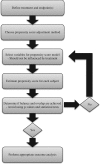Utilizing Propensity Score Analyses in Prehospital Blood Product Transfusion Studies: Lessons Learned and Moving Toward Best Practice
- PMID: 29635550
- PMCID: PMC6020820
- DOI: 10.1093/milmed/usx137
Utilizing Propensity Score Analyses in Prehospital Blood Product Transfusion Studies: Lessons Learned and Moving Toward Best Practice
Abstract
Recently, observational studies analyzing prehospital blood product transfusions (PHT) for trauma have become more widespread in both military and civilian communities. Due to these studies' non-random treatment assignment, propensity score (PS) methodologies are often used to determine an intervention's effectiveness. However, there are no guidelines on how to appropriately conduct PS analyses in prehospital studies. Such analyses are complicated when treatments are given in emergent settings as the ability to administer treatment early, often before hospital admission, can interfere with assumptions of PS modeling. This study conducts a systematic review of literature from military and civilian populations to assess current practice of PS methodology in PHT analyses. The decision-making process from the multicenter Prehospital Resuscitation on Helicopter Study (PROHS) is discussed and used as a motivating example. Results show that researchers often omit or incorrectly assess variable balance between treatment groups and include inappropriate variables in the propensity model. When used correctly, PS methodology is an effective statistical technique to show that aggressive en route resuscitation strategies, including PHT, can reduce mortality in individuals with severe trauma. This review provides guidelines for best practices in study design and analyses that will advance trauma care.
Figures




References
-
- Rosenbaum PR, Rubin DB: The central role of the propensity score in observational studies for causal effects. Biometrika 1983; 70(1): 41–55.
-
- Rubin DB: Estimating causal effects of treatments in randomized and nonrandomized studies. J Educ Psychol 1974; 66(5): 688–701.
Publication types
MeSH terms
Grants and funding
LinkOut - more resources
Full Text Sources
Other Literature Sources
Medical
Research Materials

